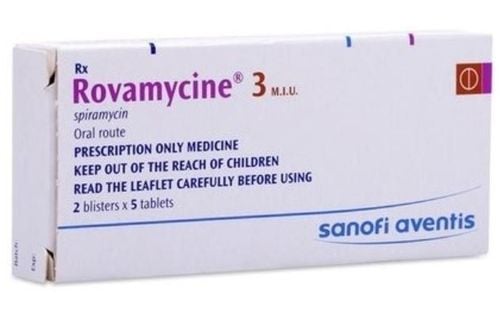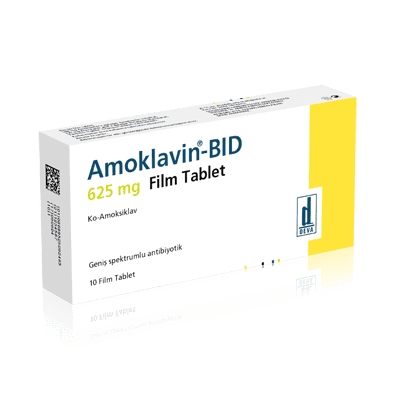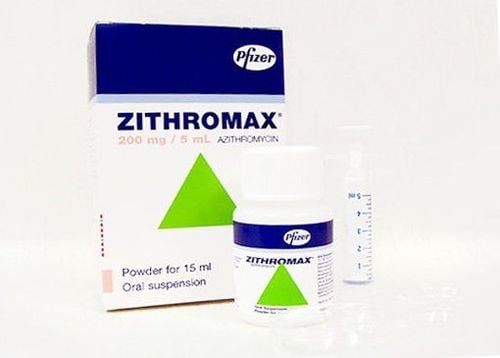What is Pefloxacin? Pefloxacin contains the active ingredient Pefloxacin with a dosage of 400mg, along with excipients sufficient for one tablet. It belongs to the group of drugs used to treat parasitic infections, bacterial infections, viral infections, and fungal infections. Let's explore the uses of Pefloxacin in the article below.
1. Effects of Pefloxacin
Pefloxacin is indicated for use in the following cases:
- Pefloxacin is only used for adults.
- It is indicated for the treatment of both acute and chronic prostatitis, including severe forms, and is used as follow-up therapy in bone and joint infections.
- It is used to treat lower respiratory tract infections, soft tissue and skin infections, gastrointestinal infections, surgical wound infections, urinary tract infections, sepsis, and gynecological infections.
- In the absence of a combination with Fluoroquinolone antibiotics, Pefloxacin is indicated for single-dose treatment in cases such as uncomplicated acute cystitis in premenopausal women and urethritis.
- Due to the resistance of pneumococci and streptococci to Pefloxacin, it should not be used in cases where infection with these bacteria is suspected. It should be combined with another antibiotic when treating infections caused by Staphylococcus aureus and Pseudomonas aeruginosa strains that are resistant to Pefloxacin.
Pefloxacin should not be used in the following cases:
- It is contraindicated in pregnant women, breastfeeding mothers, children, and adolescents (until growth has ceased), as it may cause severe joint disorders, especially in large joints, due to its toxicity on the joints.
- Contraindicated in patients with a history of hypersensitivity to Pefloxacin, Quinolones, or any excipient present in the formulation of Pefloxacin.
- Patients with a deficiency of Glucose-6 Phosphate Dehydrogenase (G6PD).
- Patients with a history of tendon damage related to Fluoroquinolone use.
2. Dosage and Administration of Pefloxacin
2.1. Administration of Pefloxacin
Pefloxacin should be taken orally. It is recommended to take it with meals or immediately after a full meal to avoid gastrointestinal discomfort.
2.2. Dosage of Pefloxacin
- For patients with normal liver and kidney function: The usual dosage is 2 tablets per day (equivalent to 800mg), divided into two doses, one tablet in the morning and one tablet in the evening. For the initial dose, a loading dose of 800mg (equivalent to 2 Pefloxacin tablets) may be used to quickly achieve an effective drug concentration in the blood.
- For patients with impaired liver function: The dosage needs to be adjusted by increasing the time interval between doses for individuals with decreased blood flow to the liver or liver dysfunction:
- If no jaundice or ascites is present, take twice daily.
- If jaundice is present, take once daily.
- If ascites is present, take once every 36 hours.
- If both jaundice and ascites are present, take once every 48 hours.
- For patients over 65 years of age: The recommended dosage is 1 tablet per day (equivalent to 400mg), divided into two doses per day, taking half a tablet of Pefloxacin at each dose.
3. Side Effects of Pefloxacin
During the use of Pefloxacin, apart from its therapeutic effects, patients may experience the following side effects:
- Common side effects: Nausea, vomiting, stomach pain, insomnia, muscle pain, joint pain, rash, urticaria.
- Less common side effects: Elevated eosinophils, headache, dizziness, diarrhea, photosensitivity.
- Rare side effects: Discomfort, hallucinations, thrombocytopenia, colitis (pseudomembranous colitis), elevated bilirubin, increased alkaline phosphatase and transaminases, subcutaneous erythema, itching.
- Very rare side effects: Acute renal failure.
- Unspecified frequency of side effects: Decreased blood cell count, anaphylactic shock, allergic reactions, petechial hemorrhages, muscle tremors, seizures, headache, confusion, increased intracranial pressure, disorientation, hallucinations, paresthesia, myasthenia, insomnia, irritability, tendonitis, joint effusion, Achilles tendon rupture, Lyell syndrome, Stevens-Johnson syndrome.
Recommendation: Patients should discontinue the use of Pefloxacin immediately if any adverse effects occur during treatment and notify their doctor to manage and treat the symptoms experienced.
4. Drug Interactions with Pefloxacin
- The bioavailability of Pefloxacin is reduced when taken with zinc salts and iron salts at doses greater than 30 mg/day due to reduced absorption of Pefloxacin. Therefore, Pefloxacin should be taken at least 2 hours apart from these medications.
- With magnesium, calcium, and aluminum salts, oxides, and hydroxides: These reduce the absorption of Pefloxacin through the digestive system, so these medications should be taken at least 4 hours apart from Pefloxacin.
- When used in combination with Didanosine (DDI), the absorption of Pefloxacin is reduced due to increased stomach acidity. Therefore, these two drugs should be taken at least 2 hours apart.
- Pefloxacin increases the effect of oral anticoagulants, increasing the risk of bleeding. INR should be monitored regularly, and adjustments to the anticoagulant dosage should be made during or after Pefloxacin therapy if necessary.
5. Precautions When Using Pefloxacin
- Patients are advised to avoid exposure to ultraviolet rays or direct sunlight during treatment and for 4 days after discontinuation due to the risk of photosensitivity.
- Tendonitis or even tendon rupture may occur, especially in the Achilles tendon and in elderly patients. Pefloxacin should be avoided in elderly individuals, those on long-term corticosteroid therapy, heavy exercisers, or those with a history of tendonitis. If necessary, the dose should be halved to reduce the risk.
- Caution is required when using Pefloxacin in patients with a history of seizures or conditions that predispose to seizures, and in those with severe liver disease or myasthenia gravis.
- In patients with G6PD deficiency, acute hemolysis may occur when using Pefloxacin. In principle, Pefloxacin or any quinolone class drugs should not be used in individuals with G6PD deficiency.
- Pefloxacin should not be used in pregnant or breastfeeding women.
- Neurological side effects may occur when using Pefloxacin, so patients should be warned not to drive or operate machinery during treatment due to the potential for unwanted symptoms.
Please dial HOTLINE for more information or register for an appointment HERE. Download MyVinmec app to make appointments faster and to manage your bookings easily.
To arrange an appointment, please call HOTLINE or make your reservation directly HERE. You may also download the MyVinmec app to schedule appointments faster and manage your reservations more conveniently.








